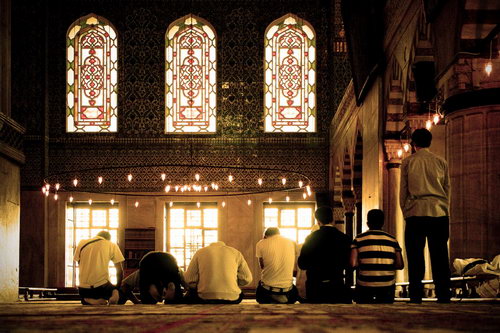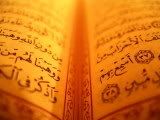
Prayers are an integral part of a muslim's life. We are told to establish prayers, to give charity and to obey the Prophet of Allah [pbuh] in the Quranic repeatedly. The Prayer of a Momin is known as the Meraj of a Momin. One can establish the lofty status that worship holds in Islam. However rather than talking about the spiritual aspect of the Prayer have we ever considered the physical concept of the Prayer? Islam is a religion which encompasses all entities be it physical, spiritual, social, economical or political hence one cannot take one aspect in its entirety and disregard the other aspects for then you have only taken what you feel sufficient and disregard the rest. Below are the physical actions within Prayer and their meanings found in the books of different Scholars:
Takbeer: There are a few explanations regarding this action. When one puts their hands up for takbeer it is as if one has surrendered to Allah. It is a gesture to show that one has completely submitted to the will of Allah. Another explanation found is that takbeer is symbolising that God is greater than what we describe and nothing matters other than Allah. The takbeer represents the fact that one is leaving the world behind and submitting to God.
Ruku: When one goes into the position of ruku, the act symbolises that one is expressing that if even one's head is chopped off in the path of God then so be it. It is an act which symbolises that one submits to the will of Allah in every way.
Sajda: Every step of the sajda is significant. The first sajda symbolises our creation from dirt, then when we get up it symbolises that God gave us life from this dirt and then when we prostrate again it symbolises our death - knowing that one day we will be buried in this dirt and it is all what will be around us. The smell of the dirt at that moment in prostration is the smell that we remain with us when we die.
Another explanation of Sajda is that when one goes down into sajda - one cannot get any lower - the rising symbolises God giving life and the second sajda is a reminder of the return to God, death. In between the sajdas it symbolises the life - and shows that God wants one to spend it seeking forgiveness.
It is said that Imam Ali [as] was asked about Sujood and the reason we do two Sujoods. Imam Ali [as] replied that the Sujood was the most humbling act of humans towards their God. In Sujood, a man puts him most precious part of his body which is the head that holds the brain, on mud as a sign of slavery to Allah.
منها خلقناكم وفيها نعيدكم ومنها نخرجكم تارةً أخرى
(From the (earth) did We create you, and into it shall We return you, and from it shall We bring you out once again.) (20:55).
Hence, the first Sujood signifies that we are created from this earth. The second signifies our return to the earth. And on the day of judgement we will rise again from the earth. (From the (earth) did We create you, and into it shall We return you, and from it shall We bring you out once again.) (20:55).
May Allah accept our worship. . .

